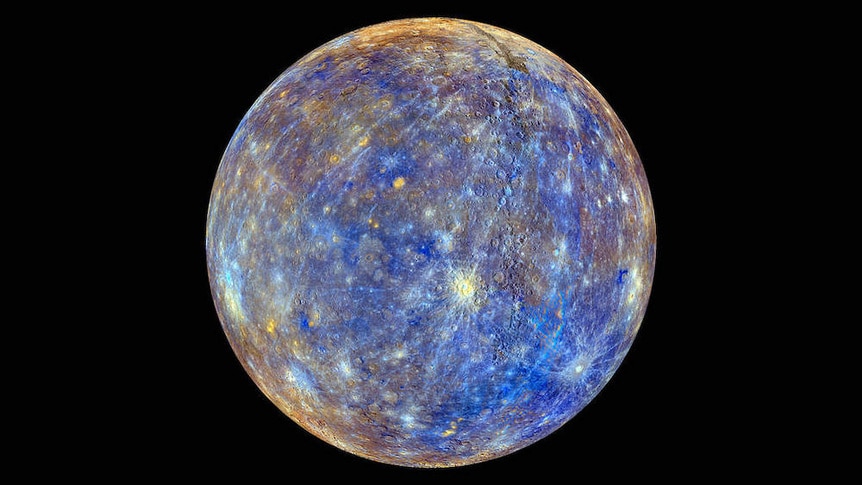Create a free profile to get unlimited access to exclusive videos, sweepstakes, and more!
How Solar Explosions Unleash X-Ray Auroras on Mercury
Mercury's close orbit and lack of atmosphere make for some incredible auroras.
Every 11 years, the Sun gets a little stir crazy and throws a temper tantrum. We’ve been tracking those cycles for the better part of three centuries and we’re currently creeping up on Solar Maximum of Solar Cycle 25. Solar Max is characterized by an uptick in sunspots, solar flares, and coronal mass ejections (CMEs). During Solar Max, eruptions of charged solar particles become more powerful and more frequent.
In the disaster flick Solar Attack, one such CME threatens to light the sky on fire and wipe out all life on Earth. In the real world, we’re protected from the worst effects of solar eruptions by the planet’s magnetic field, and CMEs mostly make themselves known by more intense and more frequent auroras. As charged solar particles bombard the Earth and get tangled up in the magnetosphere, they interact with molecules in the upper atmosphere and shine like cosmic glow sticks which we call the Northern (or Southern) Lights. While Earth’s auroras are the most famous and the easiest to see, we’re not the only world getting lit up by solar eruptions.
Solar Explosions Trigger Strange Auroras on Mercury
On March 10, 2024, a massive solar eruption struck Mercury, likely setting off intense and unusual auroral activity on the surface. Space Weather reported that a large magnetic filament broke away from the Sun on March 9 and 10. NASA’s Solar Dynamics Observatory (DSO) – a space-based observatory in geosynchronous orbit around the Earth – caught an image of the filament breaking away and estimated its size at 310,000 miles (500,000 kilometers) across.
Over the next several hours, that CME raced across the narrow gap in space and smashed into the inner planet’s surface. Because of its proximity to the Sun, Mercury is no stranger to solar bombardment, taking the brunt of solar temper tantrums, and those charged particles do some weird stuff on Mercury.
For More on Solar Storms:
Earth Narrowly Missed a Solar Storm “Apocalypse” in 2012
What Are the Northern (and Southern) Lights, Really?
Watch NASA’s Parker Solar Probe Fly Through a Coronal Mass Ejection
In 2023, researchers working with the BepiColombo spacecraft uncovered new details about Mercury’s unusual auroras. During a flyby, the spacecraft got within 125 miles (200 kilometers) of Mercury’s surface. Instruments aboard the spacecraft measured charged particles from the Sun and Mercury’s magnetosphere. They found that the tiny planet’s magnetic shield is compressed where the solar wind smashes into it and they also explained how that impacts Mercurian auroras in a paper published in the journal Nature Communications.
“For the first time, we have witnessed how electrons are accelerated in Mercury’s magnetosphere and precipitated onto the planet's surface. While Mercury’s magnetosphere is much smaller than Earth’s and has a different structure and dynamics, we have confirmation that the mechanism that generates aurorae is the same throughout the Solar System,” said lead author Sae Aizawa, in a statement.
On Earth, CME’s hit the magnetosphere and the atmosphere and trigger gorgeous light shows high up in the sky. On Mercury, all of that intense solar activity and a lower gravitational foothold robbed Mercury of its atmosphere long ago. Today, charged particles from the Sun hit the planet directly. They move in toward the planet, barely impeded by the planet’s relatively small magnetic field, and rain down on the bare ground. When that happens, they slow down so rapidly that they emit X-ray energy and create an auroral glow at the site of impact. On Mercury, the aurora doesn’t wave overhead, it glows all around you. Of course, you wouldn’t want to be standing there when it happens.































